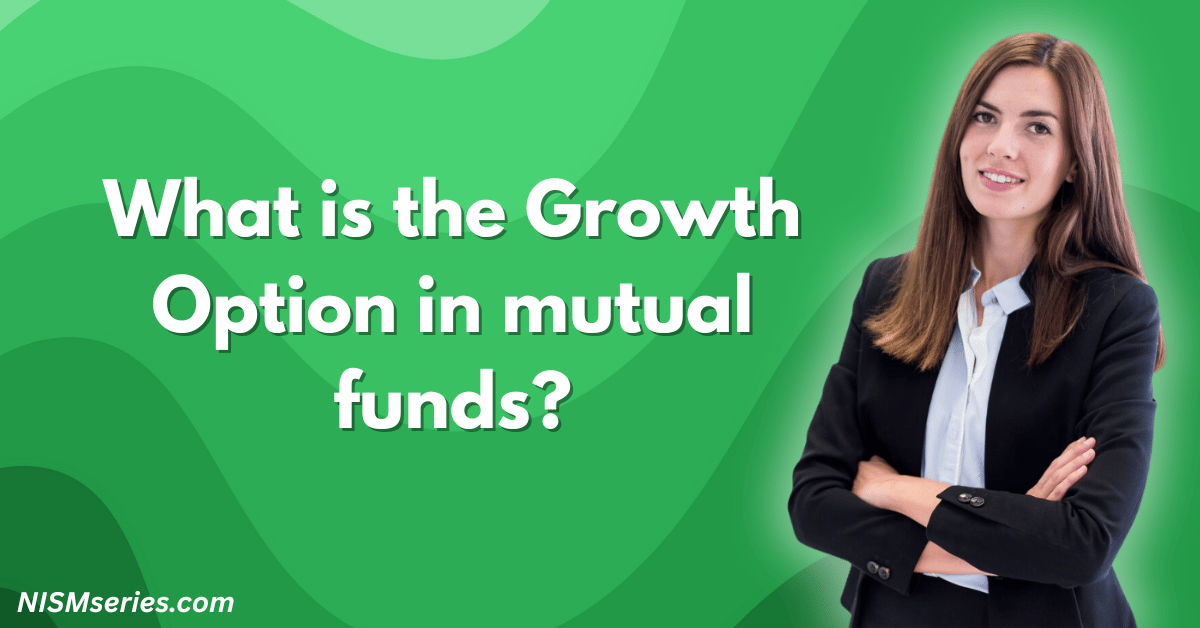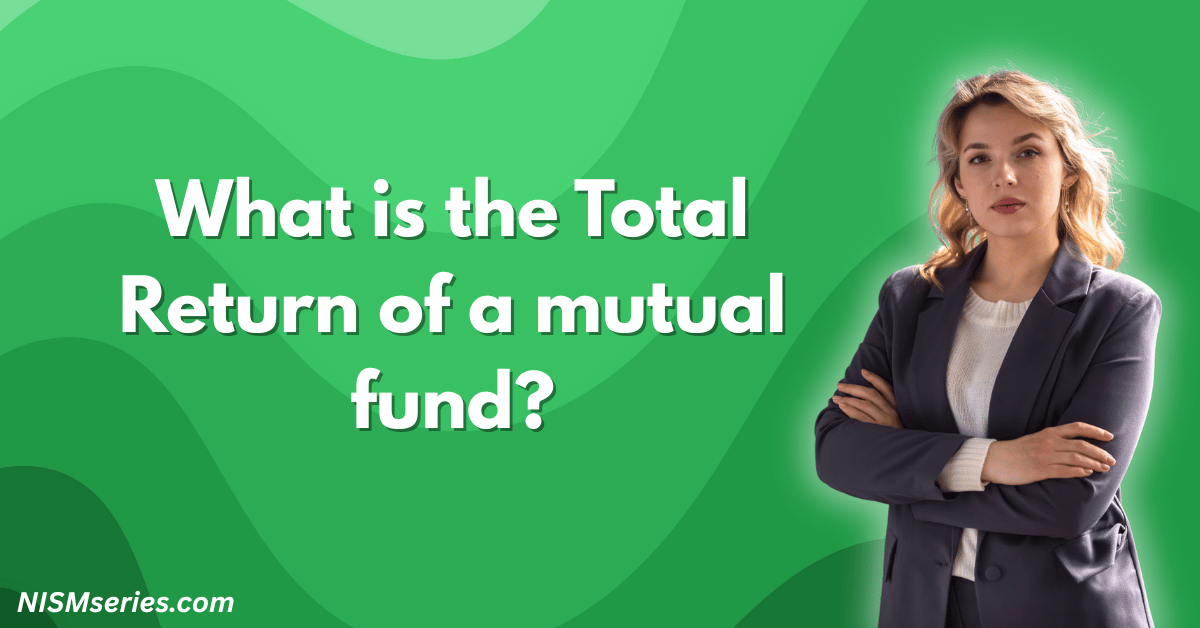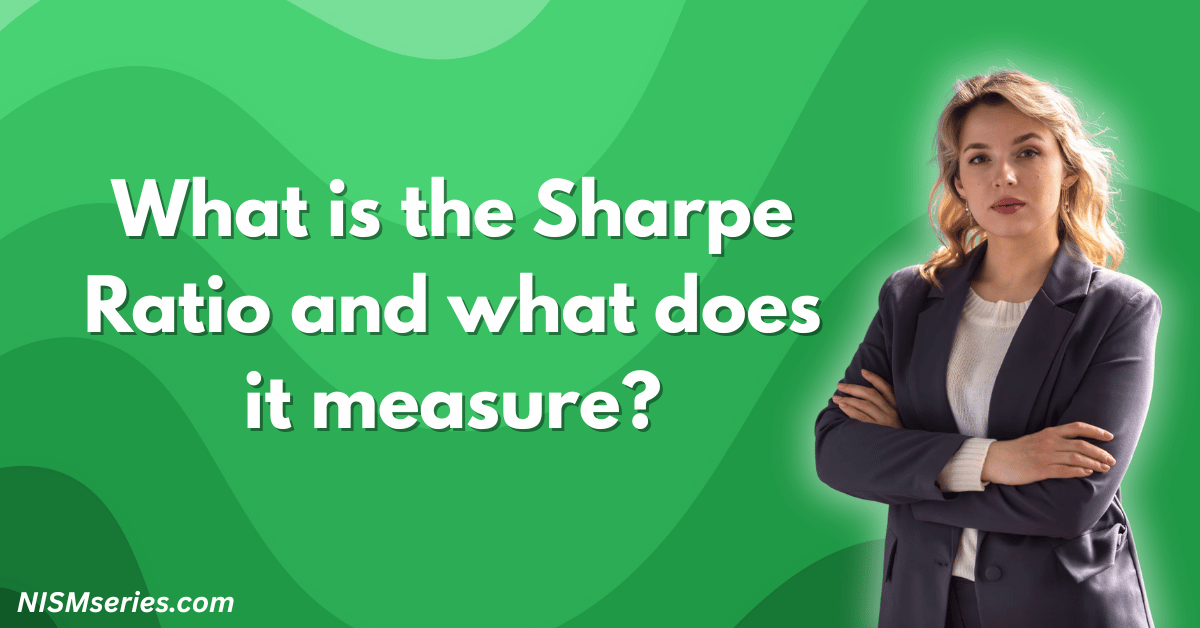The Growth option is a plan where a mutual fund reinvests all its profits. You do not get cash from dividends or interest. Instead, the fund uses that money to buy more investments, making your fund’s Net Asset Value (NAV) grow. The Growth option is the best way to build wealth for the long run. You pass on immediate income, and your investment grows much larger.
Table of Contents
Understanding Growth Option
Growth Option Meaning
The Growth option changes how a fund handles profits. You get no regular cash payments. Instead, you watch your investment value grow as all earnings are put back into the fund. This creates a cycle where profits earn more profits, making your money grow much faster. The name ‘Growth’ explains its main goal: making your investment bigger. It is the best choice for building wealth.
How Does Growth Option Work?
The Growth option uses a reinvestment system. When the fund’s investments earn money, you get no cash. The fund manager uses those profits to buy more stocks and bonds, making the total investment larger. This action directly increases the fund’s NAV. As the fund’s total value grows, so does the value of each unit you own.
Reinvestment of Profits and Capital Gains
This reinvestment includes all income the fund makes. All dividends, interest, and profits from selling investments are put back to work. Every bit of money the fund earns helps your investment grow. For example, dividends are used to buy more shares instead of being paid to you as cash.
Key Features and Benefits of Growth Option
Capital Appreciation Through Compounding
The snowball effect of compounding is the Growth option’s greatest advantage. When profits are reinvested, they begin earning their own profits. This makes your money grow much faster over time. A small investment can become a large amount of wealth. An investment of ₹1 lakh at 12% a year grows to about ₹3.11 lakh in 10 years with compounding. Without it, it would only be worth ₹2.20 lakh.
Power of Long-term Wealth Creation
Growth funds are the best tool for long-term wealth. Since you take out no money, your whole investment keeps working and growing. This makes the Growth option perfect for goals like retirement or education. A Growth fund will always make more money than an IDCW fund over long periods. The longer you invest, the bigger the difference.
Tax Efficiency Advantages of Growth Option
No Regular Dividend Payouts
The Growth option is tax-friendly. You do not get regular cash payouts, so you pay no tax on them right away. This lets all your money stay in the market and grow, without losing any to early taxes.
Higher NAV Compared to IDCW Option
Growth funds always have a higher NAV than their IDCW versions. This is because they keep and reinvest all earnings. This NAV difference is proof of the Growth option’s power to build wealth.
Deferred Taxation Until Redemption
With the Growth option, you only pay tax when you sell your units. This is a huge advantage. It lets you decide when to pay tax. You can sell in a year when you have a lower income or when tax rules are better.
Growth Option vs IDCW Option Comparison
What is the Difference Between Growth and IDCW?
The main difference is clear. A Growth fund reinvests all profits. An IDCW fund gives you some profits as cash payments.
| Feature | Growth Option | IDCW Option |
| Earnings Treatment | Reinvested into the fund | Paid out as cash |
| NAV Impact | Goes up over time | Goes down after each payout |
| Compounding Effect | Maximum power | Weaker because of payouts |
| Investment Suitability | Long-term wealth building | Needing regular income |
Which Option Offers Better Long-term Returns?
For any investment held longer than five years, the Growth option is always better. It delivers much higher returns than an IDCW fund. The power of compounding makes a huge difference. An IDCW investor gets a small cash payout now. The Growth investor’s entire amount stays invested to keep growing. The Growth investor will always have more money in the end.
Tax Implications of Growth vs IDCW Options
Capital Gains Tax on Growth Option
Growth funds are taxed when you sell. For stock funds held over a year, you pay a 12.5% Long-term Capital Gains (LTCG) tax on large profits. For funds held less than a year, you pay a 20% tax on all profits.
Income Tax on IDCW Distributions
IDCW payouts are taxed at your personal income tax rate. If the payout is large, a 10% tax is cut before you get the money.
Who Should Choose Growth Option
Ideal Investor Profile for Growth Option
The Growth option is for people focused on long-term wealth, not immediate cash. It is the perfect choice for young professionals and anyone saving for big goals like retirement. Choose the Growth option if you have a steady income, can handle market ups and downs, and can invest for more than five years.
Investment Horizon and Risk Considerations
The Growth option requires patience. The market will go up and down, but you must stay invested for the long term. Stock Growth funds have always made money over any 10-year period. People who fear risk might find it hard during downturns. But not getting cash is what allows the fund to grow so much when the market recovers.
Long-term Financial Goals Alignment
Retirement Planning Through Growth Option
Growth funds are the best tool for a retirement plan. The long time you have to save lets compounding work its magic. Young people must use the Growth option in their SIPs to build a large amount of money.
Wealth Building for Future Expenses
Big goals like college, a home, or starting a business need lots of money. The Growth option is the only way to grow your money enough to meet these needs. It will always build a bigger amount than regular savings.
FAQ
How are gains handled in growth options?
In a Growth option fund, all profits are put back into the fund automatically. You do not get cash. This makes the NAV go up. You only get your gains when you sell.
Is growth option better than dividend reinvestment?
Yes, the Growth option is always better for long-term investors. Dividend reinvestment is more complex and has bad tax effects. The Growth option is simple, automatic, and efficient.
What are the tax benefits of choosing a growth option?
The Growth option is very tax-friendly. You only pay taxes when you sell. For stock funds held over a year, you pay a low tax rate on large gains. This is much better than the tax on IDCW payouts.
Can I switch from growth to IDCW option later?
Yes, you can usually switch. But a switch is treated as selling and buying again. This will create a tax payment. You must check the tax cost before you switch.
Which mutual fund categories offer growth options?
Almost every mutual fund offers a Growth option, including equity, debt, and hybrid funds. Whatever fund you choose, you must select the Growth option to build long-term wealth.




















